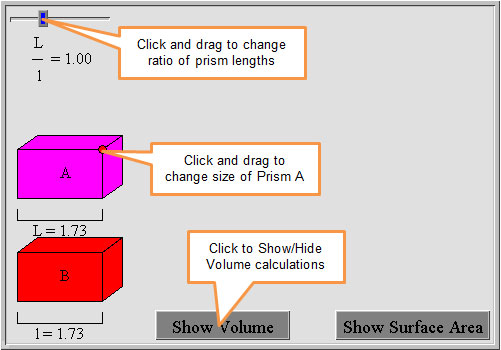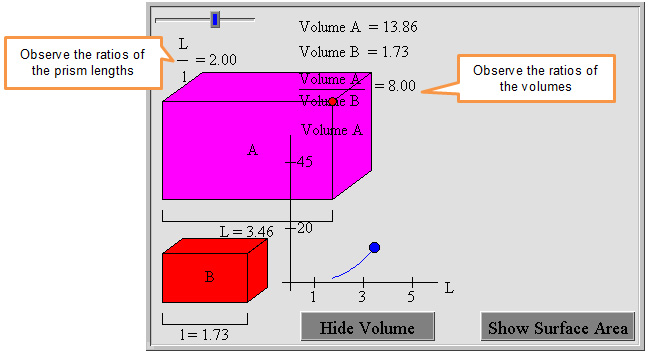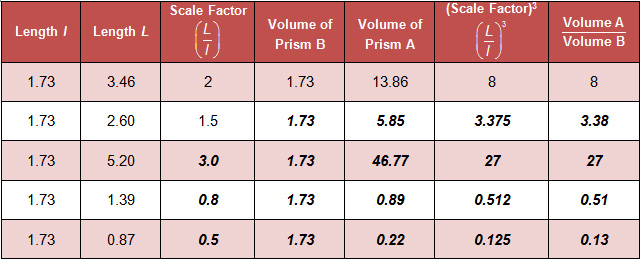
In this section, you will use an interactive applet to investigate how dilating a prism affects the volume of the dilated prism. You will also look for a relationship between the scale factor of the prism edge lengths and the scale factor of the volumes.

![]() Click on the image to open an applet to investigate how using a scale factor affects the volume of similar rectangular prisms. Use the applet to complete the table below, and then use your table to answer the questions that follow.
Click on the image to open an applet to investigate how using a scale factor affects the volume of similar rectangular prisms. Use the applet to complete the table below, and then use your table to answer the questions that follow.
Interactive popup. Assistance may be required.



Length l |
Length L |
Scale Factor |
Volume of Prism B |
Volume of Prism A |
(Scale Factor)3 |
Volume A over Volume B Volume A Volume B |
1.73 |
3.46 |
2 |
1.73 |
13.86 |
8 |
8 |
1.73 |
2.60 |
1.5 |
|
|
|
|
1.73 |
5.20 |
|
|
|
|
|
1.73 |
1.39 |
|
|
|
|
|
1.73 |
0.87 |
|
|
|
|
|
Interactive popup. Assistance may be required.


What is the relationship between the scale factor and the ratio of the volumes?
Interactive popup. Assistance may be required.

If you know the volume of Prism B and the scale factor used to dilate Prism B into Prism A, how can you use that information to predict the volume of Prism A?
Interactive popup. Assistance may be required.

